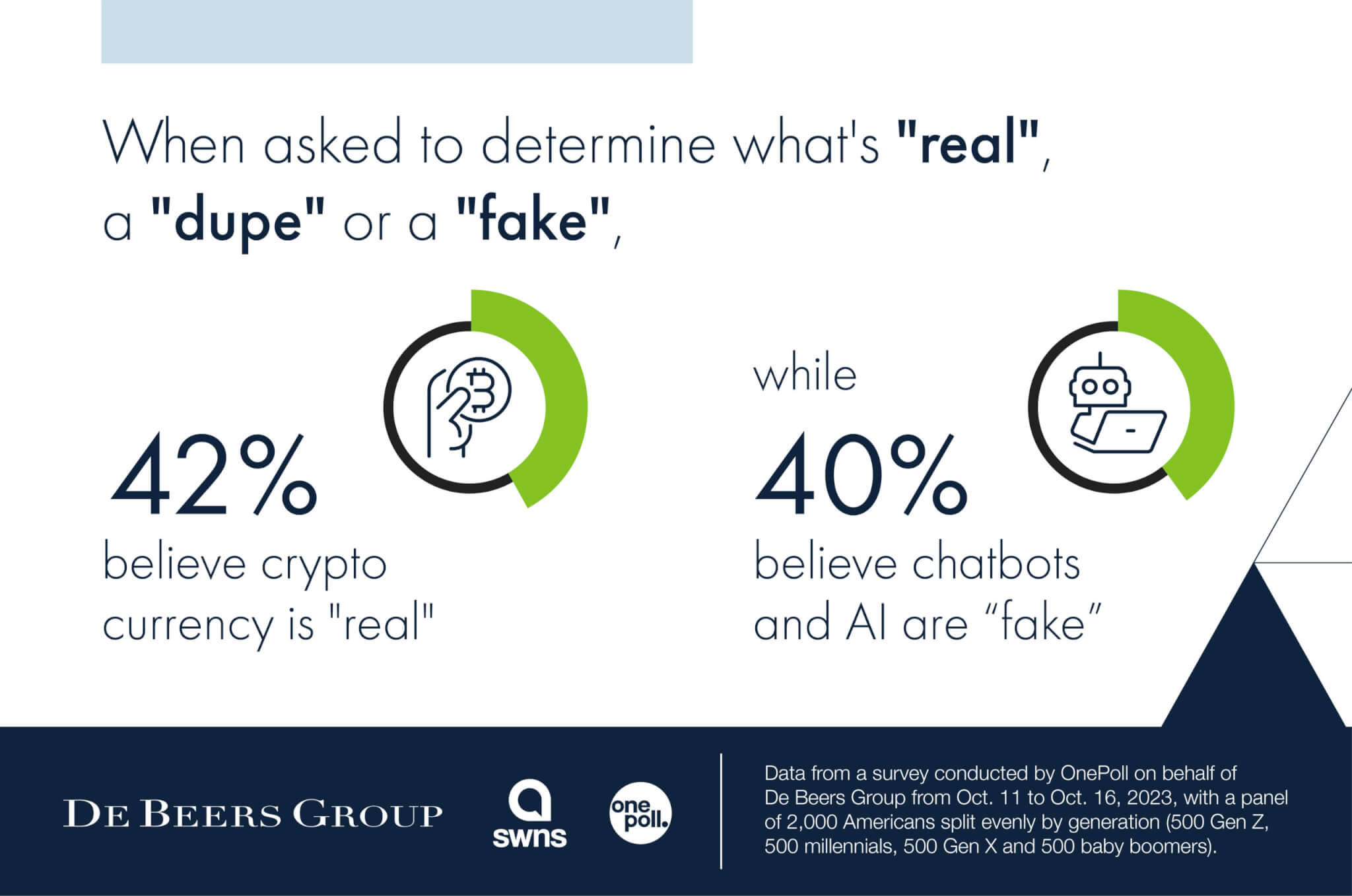NEW YORK — Americans believe only 37 percent of the content they see on social media is “real,” or free of edits, filters, and Photoshop. Between AI and “deepfake” videos — a survey of 2,000 adults split evenly by generation reveals that almost three-quarters (74%) can’t even tell what’s real or fake anymore.
Americans are wary of both targeted ads (14%) and influencer content (18%), but a little more than half (52%) find themselves equally likely to question the legitimacy of either one. This goes beyond social media and what’s happening online. The survey finds that while 41 percent have more difficulty determining if an item they’re looking to purchase online is “real” or “a dupe,” another 36 percent find shopping in person to be just as challenging.
While the average respondent will spend about 15 minutes determining if an item is “real,” meaning a genuine model or a knockoff, millennials take it a step further and will spend upwards of 20 minutes trying to decide.
Conducted by OnePoll on behalf of De Beers Group, results reveal that Americans already own a plethora of both real and fake products.

When it comes to those who own their share of dupes, clothing still ranked at the top (45%), but handbags and wallets slid into the second spot (38%), followed by shoes (35%) and fashion accessories (31%).
Though 47 percent admit they’ve purchased a fake item unknowingly, some respondents prefer that option. Those reasons include a lower price tag (54%), an almost identical look (38%), and not feeling the need to own the real item (27%).
“It’s important to note that 88% of respondents prefer to purchase items that they will get a lot of use out of,” says Sally Morrison, Director of PR for Natural Diamonds at De Beers Group, in a statement. “While for some, that means sporting designer items, but for others, that means opting for the piece that they don’t mind getting damaged or ruined. It’s clear that these things perceived as either real or dupes play very different roles in their lives.”
When asked to determine whether certain things were “real” or a “dupe,” respondents deemed GMO vegetables (35%) and cryptocurrency (42%) to be real. However, respondents dubbed lab-grown diamonds (41%), plastic surgery (52%), and Chatbots and AI (40%) fake.

Interestingly, one-quarter of both Gen Z and baby boomers think photos that have been enhanced with color or details are dupes, more than any of the other generations. To that same tune, millennials are almost twice as likely as any other generation to say that Chatbots and AI are real (43%).
When asked about the difference between “real” and “real-ish,” 36 percent of respondents believe it simply stems from the fact that the average person couldn’t tell the difference. Others say real-ish items use some of the same materials as the real ones (35%) or some real-ish items may be man-made (30%). Over the next 10 years, seven in 10 (71%) respondents think it will be harder to determine what’s real and what’s not.
“We now live in a world where technology is successfully replicating natural items. Today, every consumer has to make their own choices based on their personal value equations— where they think it’s worth investing, and where it matters less to them,” says Morrison. “One thing seems clear though — whether it’s your meat, your makeup, or your diamonds — everyone deserves full transparency about how their products were made or sourced.”
Survey methodology:
This random double-opt-in survey of 2,000 Americans split evenly by generation (500 Gen Z, 500 millennials, 500 Gen X and 500 baby boomers) was commissioned by De Beers Group between Oct. 11 and Oct. 16, 2023. It was conducted by market research company OnePoll, whose team members are members of the Market Research Society and have corporate membership to the American Association for Public Opinion Research (AAPOR) and the European Society for Opinion and Marketing Research (ESOMAR).

